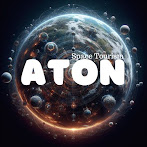The fourth planet in the solar system.
Mars is the fourth planet from the Sun and the second smallest planet in the Solar System. It is a terrestrial planet, meaning that it is made of rock and metal. Mars has a thin atmosphere composed of carbon dioxide, nitrogen, and other gases. The Martian surface is covered in a variety of landscapes, including mountains, valleys, deserts, and polar ice caps. One of the most distinctive features of Mars is its large volcano, Olympus Mons. Olympus Mons is the tallest mountain in the Solar System, rising over 22 kilometers above the surrounding plain. Mars also has a deep valley system, Valles Marineris, which is longer than the Grand Canyon and stretches for over 4,000 kilometers.
Planetary regards description of Mars
Mars is a cold, dry planet. The average temperature on Mars is -63 degrees Celsius (-81 degrees Fahrenheit). The Martian atmosphere is very thin, so there is little protection from the Sun's radiation. Mars has two moons, Phobos and Deimos. Phobos and Deimos are small, irregularly shaped moons. They are thought to be captured asteroids. Mars is a fascinating planet with a rich history. Scientists are still learning about Mars and its potential for habitability.
Facts
* Mass: 6.4171 x 10^23 kg (0.107 Earths)
* Volume: 1.6318 x 10^11 km³ (0.151 Earths)
* Density: 3.933 g/cm³
* Surface Area: 144.798 x 10^6 km² (28.4% of Earth)
* Equatorial Radius: 3,396.2 km (53.2% of Earth)
* Polar Radius: 3,376.2 km (53% of Earth)
* Average Temperature: -63°C (210 K)
* Highest Temperature: 20°C (293 K)
* Lowest Temperature: -140°C (133 K)
* Atmospheric Pressure: 0.6% of Earth's
* Surface Gravity: 37% of Earth's
* Length of Day: 24.6 hours
* Length of Year: 687 days
* Number of Moons: 2 (Phobos and Deimos)
Mars Trivia
* Mars is the fourth planet from the Sun.
* Mars is the second smallest planet in our solar system.
* Mars is often called the "Red Planet" because of the iron oxide in its soil.
* Mars has a very thin atmosphere, which is made up of mostly carbon dioxide.
* Mars has two moons, Phobos and Deimos.
* Mars has a surface that is covered in craters, volcanoes, canyons, and polar ice caps.
* Mars has been visited by numerous spacecraft, including the Mariner 4, Viking 1, and Curiosity rover.
* Mars is a popular destination for human exploration.
FAQs
Is there life on Mars?
There is no definitive answer to this question. Scientists have not yet found any evidence of life on Mars, but they are continuing to search.
Could humans live on Mars?
It is possible that humans could live on Mars, but it would be very difficult. Mars has a very harsh environment, and humans would need to be protected from the cold, the radiation, and the lack of oxygen.
When will humans first set foot on Mars?
NASA is planning to send humans to Mars in the 2030s. However, this date could be pushed back depending on funding and technological challenges.
What are the challenges of sending humans to Mars?
There are many challenges associated with sending humans to Mars. These challenges include the long travel time, the harsh environment, and the need to create a sustainable human colony on Mars.
What are the benefits of sending humans to Mars?
There are many potential benefits to sending humans to Mars. These benefits include learning more about the planet, searching for life, and inspiring future generations of scientists and engineers.


No comments:
Post a Comment